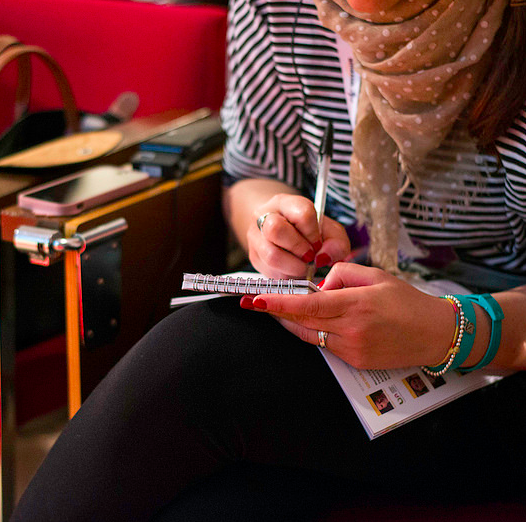
(photo by Rita Alessia Dispoto)
With new tools, new slogans and new protagonists, journalism has never been as necessary and in danger, in recent history, as it has been in 2015. While technologies and new platforms allow it to be everywhere, both for those who report, and for those who learn, on the other hand the figure of the journalist continues to represent a threat to power or a testimony to stop, whether it comes from the pages of a newspaper or from a critical tweet towards those who rule.
According to the Committee to Protect Journalists (CPJ), there were 221 journalists imprisoned in 2014, compared to 80 in 2000. In Egypt, Bahrain, Mexico, Saudi Arabia, Russia, also in France, while the rest of Europe watched with their own eyes the horror of intolerance towards freedom of opinion in the attack on Charlie Hebdo. “A global battle for freedom of expression is upon us, and the casualties are mounting,” explained the executive director of CPJ Joel Simon, relating the facts of Paris.
The response to an attack on freedom of expression has often turned into the claim for greater surveillance, creating a dangerous paradox. The tendency of governments worldwide to control media has become increasingly evident, also in countries where the constitution has always protected freedom of information, such as the UK and the US. According to Clay Shirky, the essential question is : “So what should journalists and publications do to maximize their ability to report newsworthy stories and minimize government interference?”
In the last few months, a concrete answer to this question has come from stories, such as Datagate and others, in which journalism used leaks and transnational collaboration among reporters and publications to uncover data and complex situations, as in the recent cases of Luxleaks and Swissleaks. This is why “brave sources are going to require brave journalists,” able to have technical skills and respond quickly to the needs of the free press, technology and journalistic ethics.
The freedom of expression has been strained by new forms of terrorism that threaten it also from the point of view of communication. The videos made by the Islamic State, for example, have been the subject of global debate for months. As already known, ISIS has set up a sophisticated propaganda machine to bring media and Western observers to question its mechanisms and their own ethical boundaries. What kind of behaviour is required in a newsroom, when the horror ends up in the same online places that we have been used to living quietly with for years, such as newspaper homepages and YouTube galleries? And is it legitimate to publish propaganda, indiscriminately, at the risk of becoming a simple “multiplier” of the propaganda message?
This has been one of the major issues for journalism during the last year. In the meantime, it has been following old and new trends. On the one hand, the theme of the role of the reader in the era of open web (one of the leading themes of the 2014 edition of the International Journalism Festival) has remained, finding concrete answers in cases of successful crowdfunding, participation and inclusion of communities in the story of the news. On the other hand – from the editorial point of view – the trend of mobile-oriented services, of the strengthening of the offer for millennials, of the investigative multimedia report, has been imposed in a scenario in which old media are losing the trust of readers and need to learn to compete with more than just journalistic platforms (from Google to Facebook), both from the content and the commercial point of view.


